VIDEO: One year later, King County’s largest-ever floodplain restoration project is improving salmon health
Summary
April 21, 2025: One year after completing the largest floodplain restoration project in King County's history, ecologists report young Chinook salmon are growing considerably well in the newly restored habitats along the Snoqualmie River, validating the county’s approach to improving habitat and offering a blueprint for future salmon recovery work.
News
Young Chinook salmon are growing considerably well in the restored habitats of King County’s largest-ever floodplain restoration project along the Snoqualmie River, validating the project’s design and establishing a clear direction for future fish habitat improvements elsewhere.
Ecologists at the King County Water and Land Resources Division studying the effectiveness of the 145-acre Fall City Floodplain Restoration Project site determined that the restored habitats promote the growth of young salmon and provide distinct, abundant food resources. Those benefits increase the chances that the salmon will survive their journey to the Pacific Ocean and return home to spawn the next generation.
The restoration project simultaneously improved habitat and strengthened flood protections for nearby farms, homes, and roads. It was one of the first projects led by King County that applied the principles of Snoqualmie Fish, Farm, and Flood, an agreement created to achieve multiple benefits for restoration projects in the county’s largest river system.
"This study confirms the effectiveness of King County’s largest-ever floodplain project to restore the natural environment for people, fish, and wildlife," said King County Executive Shannon Braddock. “Through strong partnerships, our work along the Snoqualmie, Cedar, Green, and Duwamish rivers is simultaneously improving habitat and reducing flood risks, inspiring hope for a more resilient future.”
It is the latest in a series of successful restoration projects that King County and its partners have completed in recent years along major river corridors, including the Green, Cedar, and Duwamish rivers.
That is in addition to widespread improvements in the health of urban streams, based on two decades of data collected and analyzed by scientists at the Department of Natural Resources and Parks. A 2023 trends study found that conditions in 16 of 38 watersheds are improving while just one is declining.
They are among the countywide environmental accomplishments King County made during former Executive Dow Constantine’s 16 years in office, many of which are profiled in this video.
“Scientific studies show we’re making progress in both rural and urban areas of King County, restoring the natural environment for people, salmon, and orcas,” said John Taylor, Director of the King County Department of Natural Resources and Parks. “We will always have more work to do, particularly as we prepare our region for climate impacts, but research confirms that we have the proven ability to achieve ambitious goals that produce multiple benefits."
Capitalizing on a unique opportunity in King County’s largest river system
The project team capitalized on the unique opportunity offered by the sheer size of the site located in the Snoqualmie watershed, among the most productive in the Central Puget Sound region for salmon.
“There is almost no other place in the county where we can do a project of this scale and the location is just so important for our basin’s salmon, so we needed to do the best project we could,” said Andrea Mojzak, Snoqualmie Basin Steward at King County Water and Land Resources Division. “By removing and setting back levees and revetments, punching in a few inlets to the historic side channel, creating a brand-new side channel, and installing large wood, we were able to restart natural processes that create and sustain quality habitat for salmon.”
The research team that studied the effectiveness of the project custom built 19 enclosures where young salmon were temporarily kept in the river for observation. Each fish received a tiny neon glow tag that allowed researchers to track the salmon’s growth and diet.
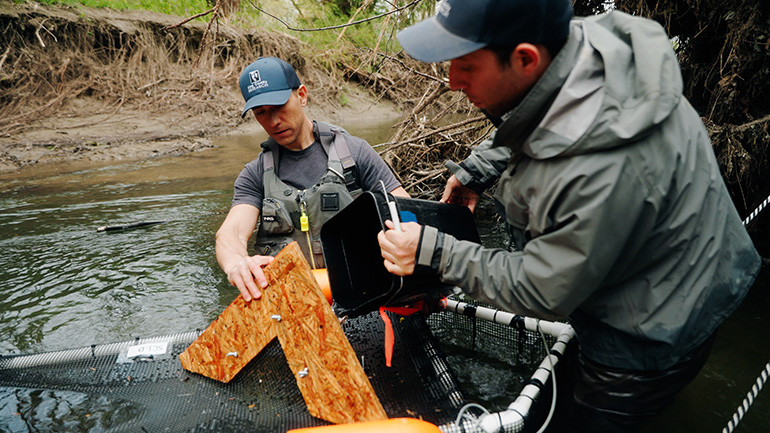
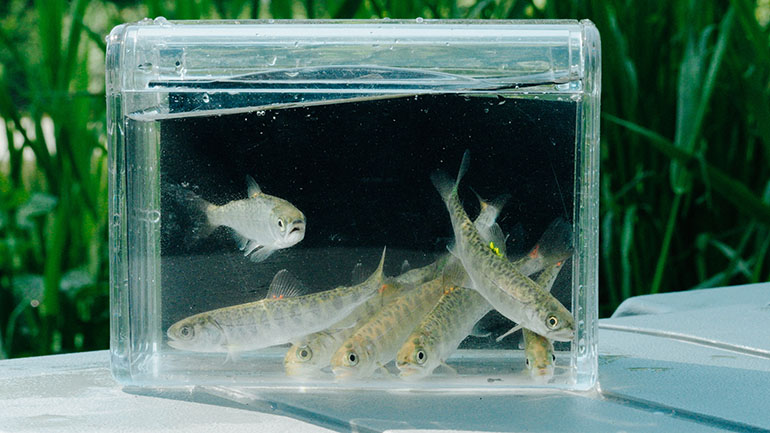
The study’s results are clear: Restored habitats promoted considerable growth for young Chinook salmon, with fish gaining more than one-third of their body weight – and some gaining more than half their body weight – over the 6-week study period.
“This is meaningful growth for young salmon,” said Josh Kubo, a fish biologist at the Water and Land Resources Division. “Additionally, we’ve found that this project provides different growth and food opportunities across habitats and throughout spring, providing ongoing benefits for young salmon as they grow, move between restored habitats, and take advantage of these opportunities.”
Ecologists are now conducting a second year of research to represent a broader range of environmental and growth conditions, ensuring rigorous and reproducible science and further validating the benefits for fish, habitat, and food.
The successful project design and assessment can serve as a template for future restorations led by King County and its salmon recovery partners.
“This amazing Fall City Floodplain Restoration Project was made possible through over a decade of collaboration with the Snoqualmie Indian Tribe, and in partnership with the Fall City community, Snoqualmie Valley farmers, the Fish, Farm, and Flood Committee and many more," said King County Councilmember Sarah Perry. "It’s a cause for celebration that our collective efforts to steward our land and water have notably benefited our salmon populations while also strengthening flood protections and agricultural production, allowing our communities and our environment to thrive!”
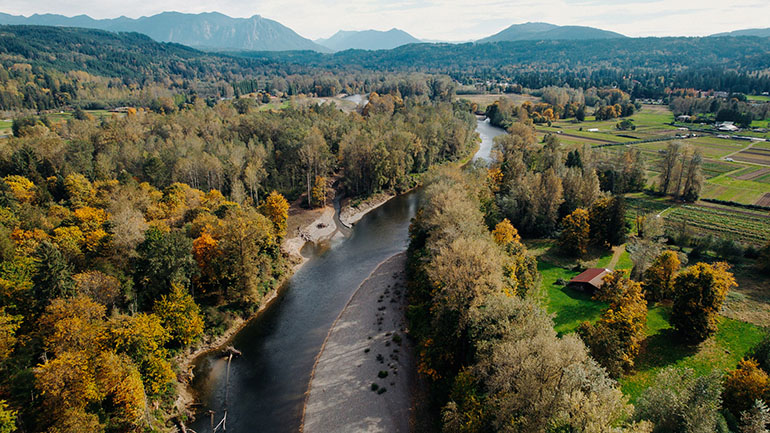
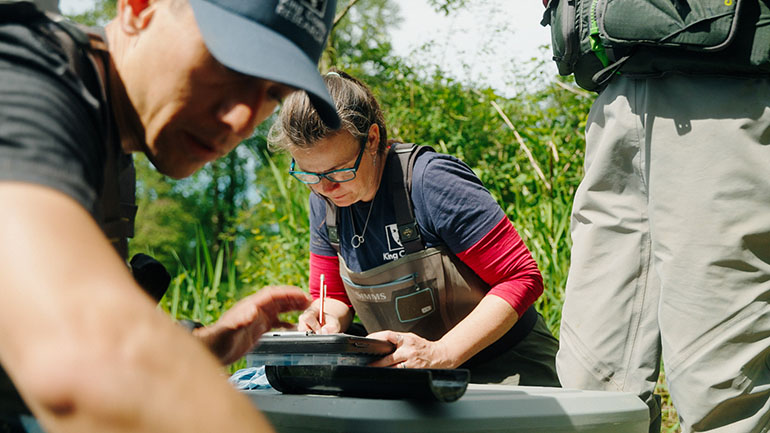
The $19 million restoration project – including the costs to acquire the property – was funded with a variety of sources, including competitive grants for salmon recovery, flood risk reduction, and agricultural productivity:
- Washington State Recreation and Conservation Office
- Washington State Department of Ecology – Floodplains by Design
- King County Cooperative Watershed Management Grant via the King County Flood Control District
- Surface Water Management Fees
- Snoqualmie Indian Tribe for vegetation planting on a portion of the site
- King County Parks Levy
- King County Conservation Futures Grant
- King County Flood Control District
- Washington State Salmon Recovery Funding Board
The Water and Land Resources Division, which coordinated the floodplain restoration, is one of four divisions at the King County Department of Natural Resources and Parks.
“Understanding what habitats salmon use, and the precise benefits that each habitat provides to salmon at various life stages, is imperative to guiding and making the most out of our limited restoration resources,” said Skykomish Mayor Henry Sladek, who is also Chair of Snoqualmie Watershed Forum. "The Snoqualmie Watershed Forum will continue to support not just the projects, but the research and monitoring that help us to target and prioritize restoration efforts.”
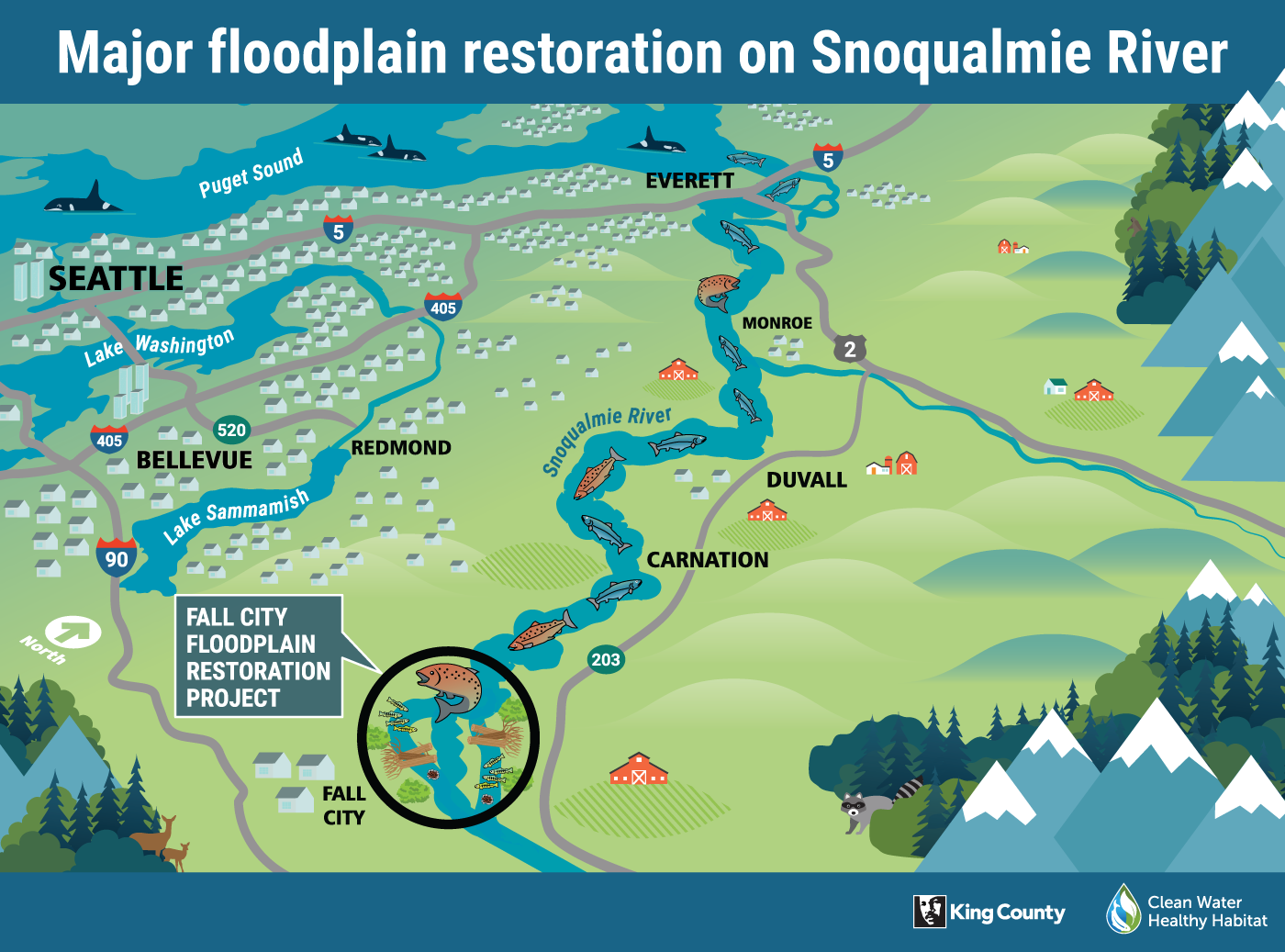
Multimedia
- VIDEO: Restored habitat is helping young salmon
- VIDEO: A legacy of environmental stewardship
- PHOTO GALLERY: Images of the project site and validation study
- TRACK: An interactive map of environmental stewardship in King County
Resources
- News release from Earth Week 2024 press tour of the project site
- Project overview of Fall City Floodplain Restoration
- Snoqualmie Fish, Farm, and Flood
- Clean Water Healthy Habitat
Quotes
This study confirms the effectiveness of King County’s largest-ever floodplain project to restore the natural environment for people, fish, and wildlife. Through strong partnerships, our work along the Snoqualmie, Cedar, Green, and Duwamish rivers is simultaneously improving habitat and reducing flood risks, inspiring hope for a more resilient future.
This amazing Fall City Floodplain Restoration Project was made possible through over a decade of collaboration with the Snoqualmie Indian Tribe, and in partnership with the Fall City community, Snoqualmie Valley farmers, the Fish, Farm, and Flood Committee and many more. It’s a cause for celebration that our collective efforts to steward our land and water have notably benefited our salmon populations while also strengthening flood protections and agricultural production, allowing our communities and our environment to thrive!
Understanding what habitats salmon use, and the precise benefits that each habitat provides to salmon at various life stages, is imperative to guiding and making the most out of our limited restoration resources. The Snoqualmie Watershed Forum will continue to support not just the projects, but the research and monitoring that help us to target and prioritize restoration efforts.
There is almost no other place in the county where we can do a project of this scale and the location is just so important for our basin’s salmon, so we needed to do the best project we could. By removing and setting back levees and revetments, punching in a few inlets to the historic side channel, creating a brand-new side channel, and installing large wood, we were able to restart natural processes that create and sustain quality habitat for salmon.
Scientific studies show we’re making progress in both rural and urban areas of King County, restoring the natural environment for people, salmon, and orcas. We will always have more work to do, particularly as we prepare our region for climate impacts, but research confirms that we have the proven ability to achieve ambitious goals that produce multiple benefits.
This is meaningful growth for young salmon. Additionally, we’ve found that this project provides different growth and food opportunities across habitats and throughout spring, providing ongoing benefits for young salmon as they grow, move between restored habitats, and take advantage of these opportunities.
Contact
Doug Williams, Department of Natural Resources and Parks, 206-477-4543
Visit our Newsroom for additional resources

 Translate
Translate